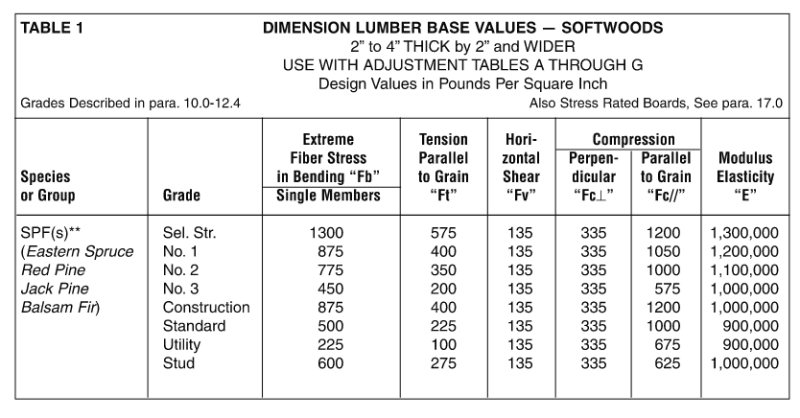Ben29
Structural
- Aug 7, 2014
- 325
I specify SPF #1/#2 for wall construction. They are listed together in NDS Table 4A, and therefore have the same design values. A contractor sent me an RFI today asking if he could use SPF #2, and he gave me the below sheet indicating lower design values for SPF#2.


